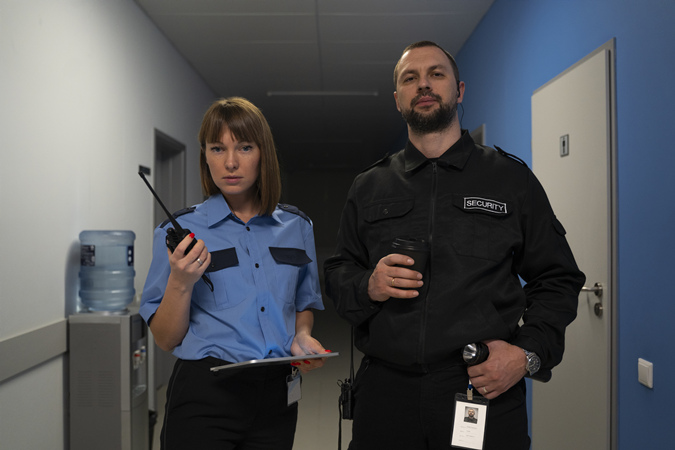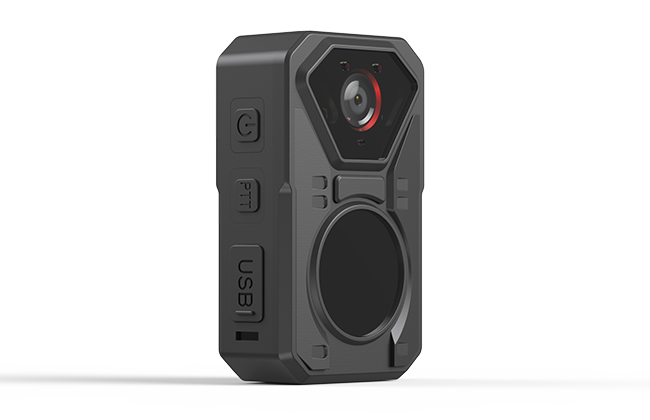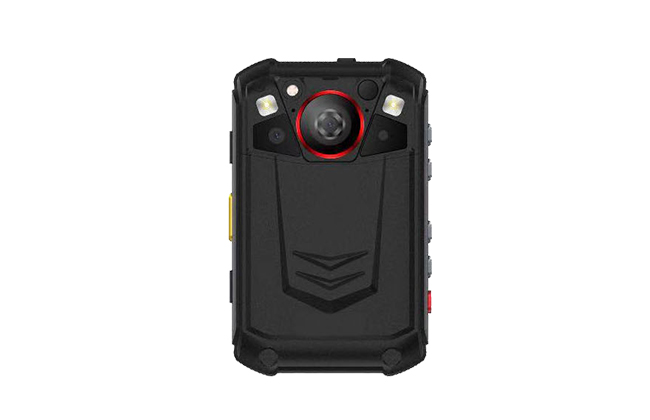Body cameras play a crucial role in standardizing law enforcement actions, refining procedures, improving enforcement methods, and respecting and safeguarding the legal rights of all parties involved, including traffic officers and auxiliary police personnel. However, in practical work, some frontline traffic officers lack a proper understanding of the importance of body cameras and insufficient knowledge on their usage. This leads to issues such as improper use and lack of focus, which prevents the body cameras from effectively standardizing law enforcement and protecting the rights of law enforcers and the opposing parties.
Drawing from practical work experience, this article analyzes the role of body cameras in current traffic police law enforcement and identifies the problems in their practical application. It explores the tactics of using body cameras and looks forward to further enhancing the effectiveness of body cameras and improving the standardization level of traffic police law enforcement.
(1) Enhancing Responsibility and Professionalism: Body cameras, with their digital photography, video recording, and audio recording capabilities, can document the actions and behaviors of traffic officers during their duties. This not only objectively reflects the officer’s work attitude and ability but also serves as a reminder for them to be responsible for their actions, ensuring fair, standardized, and civil law enforcement. It helps prevent unfair or unprofessional law enforcement and effectively curbs violations of laws and regulations. At the same time, body cameras promote the habit of handling issues objectively, neutrally, and legally, thereby improving the officer’s understanding and implementation of laws, regulations, and normative documents. The officer’s unit can also review the video to replay the law enforcement process, provide positive incentives, and use these audio-visual materials for training new traffic police and auxiliary police.

(2) Serving as a Work Secretary: Body cameras provide significant assistance in writing case reports, various documents, analyzing scenes, and assisting investigations after law enforcement. Compared to using pen and paper, body cameras can analyze event timelines, movement trajectories, key audio and video clips, reconstruct or replay the event process, and restore the scene’s spatial structure through video analysis software.
(3) Protecting the Legal Rights of Traffic Police: Traffic police, being on the front line of law enforcement, may encounter situations where the public does not cooperate with investigations, refuses to accept penalties, or even assaults traffic police or makes malicious complaints. Traffic police may be required to respond to complaints or undergo review by functional departments. However, evidence collected by body cameras can fairly and accurately reproduce the scene of law enforcement. Especially in complex cases, body cameras can effectively restore every detail of the case, which often plays a decisive role in the discretionary process. Therefore, presenting real and legally collected audio and video materials is crucial for traffic police and auxiliary police to protect their legal rights.
(4) Improving Risk Decision-Making Ability: The presence of body cameras prompts the wearer to consider the responsibility risk they may bear if their actions fail. The wearer can curb irrational behavior and improve the feasibility of risk decisions, thereby reducing law enforcement costs and risks, by self-thinking, searching for information, consulting colleagues, asking superiors, and implementing plans. Especially when taking force control measures, the presence of a body camera will prompt the wearer to stay sober and accurately record the necessity and reasons for the force measures taken, and take the lowest level of force measures according to the law.
(5) Reducing Burden and Increasing Efficiency: The use of body cameras to record relevant procedures can replace some legal documents, thus achieving the purpose of “reducing burden and increasing efficiency.” This includes four situations: 1. Replacing written inquiry records with audio and video recordings in fast processing procedures. 2. Replacing written inspection records with full audio and video recordings during inspections. 3. Replacing on-site records with full audio and video recordings when implementing administrative enforcement measures. 4. Replacing mediation agreement documents with on-site audio and video recordings in on-the-spot mediation cases.
While the use of body cameras plays a significant role in enhancing the professionalism, standardization, and expertise of traffic police, there are still some notable shortcomings in practice. Common issues include:
(1) The camera lens does not follow the wearer’s line of sight or filming needs. The content captured by the body camera lens and what the wearer is focusing on are not always in sync, especially when it comes to scenes that cause psychological stress to the wearer. For example, aggressive behavior from law violators, gruesome traffic accident scenes, etc. These situations can directly influence the wearer’s subsequent actions and even lead to subconscious reactions or uncivilized language. This results in only seeing some of the wearer’s inappropriate actions in the playback of the audio and video materials, while ignoring the objective reasons that led to such situations.
(2) The video recording speed is different from real-time speed. Body cameras require high stability from the wearer. When the wearer suddenly moves, the recorded footage may distort and lose important details. Also, the process of recognition, decision-making, and reaction all take time, which often cannot be reflected in the footage, leading to a logical break in the footage and potential accusations of data tampering.
(3) Filming in low light may distort the footage. Although current body camera low-light compensation technology can improve video quality in low-light environments, it may also affect the recognition of the scene and movement details. Especially during lighting transitions, such as suddenly going from bright to dark or vice versa, the footage may briefly go blank, which can also be mistaken for data tampering.
(4) The wearer’s clothing or limbs may block the camera. Depending on the placement and angle of the body camera, the footage may be obstructed by the wearer’s clothing or limbs, causing key scenes to be missed. This problem can occur whether the body camera is placed on the shoulder or chest.
(5) The footage recorded by the video is two-dimensional, which can easily cause distance distortion. Because body cameras cannot record depth of field, they may visually compress the distance between objects, making them appear closer than they actually are. This can lead to viewers misunderstanding the level of threat faced by the wearer and misinterpreting the wearer’s subsequent law enforcement actions.
(6) A single body camera cannot fully reflect the whole event. In practice, sometimes the footage recorded by one body camera may seem like a violation from one angle but completely reasonable from another. This is because the real law enforcement environment is three-dimensional, and the body camera only records part of it. In actual work, I found that dash cams can be a good supplement, and other colleagues in the police group can stand at different angles to make the videos shot by different body cameras connect with each other, which can effectively solve this problem.
(7) The content filmed by the body camera can be influenced by human factors. The wearer of the body camera may not accurately record the real scene for various reasons, such as lack of experience or negligence in observation. For example, to fix some important evidence, detailed photos or close-up videos are needed, which requires the wearer to remove the body camera, hold it in their hand to film, and explain their actions.
(8) Watching the content filmed by the body camera cannot replace traceability investigation. The body camera only records part of the truth, cannot restore the dynamics of the group, cannot fully and truthfully reflect the whole event, and will be subject to technical limitations, causing problems in the objective presentation of the footage, and cannot provide effective reasoning basis. Therefore, tracing the truth cannot completely rely on the content filmed by the body camera, and traditional field investigation methods are still very important.
Body cameras are an essential piece of law enforcement equipment that requires professional training and guiding documents. This allows managers and wearers to understand its pros and cons and find ways to optimize its use. The conscious recording of key law enforcement information using appropriate tactics can significantly enhance the completeness and logic of audio and video materials, improve the effectiveness of evidence, and thereby enhance the standardization and professionalism of traffic police law enforcement.
(1) Consciously record key information. Key information includes the process of decision-making by the wearer, the legal basis, whether there are alternative options, especially when it involves the use of coercive measures. This includes information such as the names, physical characteristics, birth dates, emails, addresses, and contact information of relevant individuals, or information that may be suspected of being illegal or excluding illegality, as well as information that cannot be recorded by video, such as describing the smell of the scene, suspicious background noises, temperature, etc.

(2) Use clear and concise language. The audio and video data recorded by the body camera should be understandable to both the wearer and their colleagues, and accurately understood by third parties. Therefore, the wearer should use professional terminology during law enforcement, reduce the use of jargon and catchphrases, and avoid using uncivilized language.
(3) Record key information concisely. The data collected by the body camera is quite complex, so it’s best to enter information in groups, such as what each witness said, what actions the law enforcer took, what evidence was collected, etc. To achieve this, a marker should be entered separately according to the theme or category. It’s worth noting that it’s best to design some templates for common police situations, events, and tasks in advance, which will make the entered information more logical and facilitate data management later.
(4) Record objectively. To ensure the fairness, objectivity, and neutrality of evidence collection and use, try to de-emotionalize when entering information and avoid using imaginative or biased statements.
(5) Record the process. When performing certain professional tasks, the body camera can be treated as an observer, and the whole process can be narrated.
With the advancement of science and technology, the use of comprehensive investigation methods, and the construction of standardized training systems, the problems with body cameras in practical applications are expected to be gradually resolved, thereby continuously improving the efficiency of traffic police law enforcement.
(1) The application of digital information technology will significantly enhance the technological, intelligent, and systematic level of body cameras. For example, by introducing target tracking algorithms and facial recognition technology, body cameras can automatically track the wearer’s line of sight and automatically identify key events, personnel, and items for filming. At the same time, setting up additional cameras can comprehensively record the environment and the wearer’s behavior; optimizing the camera’s hardware configuration and video processing algorithms can enhance adaptability to rapid movements and sudden events, increase video recording speed, reduce distortion, and loss of details; improving the body camera’s low-light compensation technology can enhance video quality in low-light or light-dark transition environments; developing lightweight head-mounted or clip-on body cameras more suitable for law enforcement scenarios can effectively reduce the obstruction of clothing and limbs, and improve battery life. At the same time, comfort can be ensured through reasonable design and adjustment; introducing depth perception technology and virtual reality technology can enable body cameras to more accurately record depth information of the scene, obtain 3D panoramic law enforcement images, reduce distance distortion, and provide a more realistic viewing experience.
(2) Combining body cameras with other law enforcement equipment and technology can effectively improve law enforcement efficiency. For example, body cameras can be synchronized with dash cams, drones, road monitoring equipment, etc., to achieve all-round, multi-angle recording; combining body cameras with intelligent analysis technology can achieve automatic analysis and processing of law enforcement data.

(3) Strengthen the construction of standardized training systems. By enhancing the promotion and training of the standard use of body cameras, the correct use of body cameras can be ensured, reducing recording errors caused by human factors. At the same time, more scientific and reasonable usage standards and procedures should be researched and developed to improve the wearer’s usage skills and awareness, and enhance the level of standardized law enforcement.
In conclusion, with the advancement of technology and the improvement of laws, regulations, and law enforcement guidelines, body cameras will become a powerful tool for maintaining law enforcement fairness, improving law enforcement levels, ensuring the legal rights of traffic police, and strengthening social safety and order maintenance."